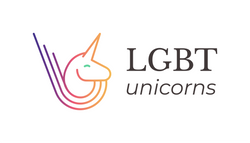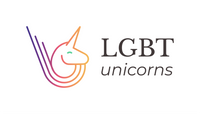Sexual Orientation
What are different types of sexualities?
-
Alloromantic
A person who identifies as alloromantic experiences romantic attraction to others.
-
Allosexual
This is an umbrella term.
A person who identifies as allosexual typically feels sexual attraction toward other people. They may also want to have sex with a partner.
People who identify with this orientation may also identify with another sexuality, such as being gay, lesbian, or bisexual.
-
Androsexual
People who consider themselves androsexual feel attraction toward men, males, or perceived masculinity irrespective of whether or not they were assigned male at birth.
-
Aromantic
A person who identifies as aromantic may not feel any romantic attraction toward anyone.
People who are aromantic may not want a relationship beyond friendship.
Those who identify with this orientation may also identify with another orientation.
A person’s romantic attraction can differ from their sexual attraction. For example, a person may not be romantically attracted to people but can be sexually attracted to some.
-
Asexual
Asexual is an umbrella term that encompasses a broad spectrum of sexual orientations.
According to the LGBTQIA Resource Center, asexuality is a spectrum. Some people may experience no sexual or romantic attraction to anyone, while others may experience varying degrees of sexual or romantic attraction to people.
Those who identify with this orientation do not have to abstain from sex to be asexual.
-
Autoromantic
Those who are autoromantic experience a romantic attraction toward themselves.
This does not mean that they do not experience romantic attraction toward others as well.
-
Autosexual
Those who identify as autosexual experience a sexual attraction toward themselves.
Similarly to those who are autoromantic, people who are autosexual may also experience sexual attraction to other people.
-
Bicurious
People who identify as bicurious are interested in having a sexual or romantic experience with someone of the same gender.
The term indicates that the person experiences some uncertainty as to how they identify romantically or sexually.
-
Biromantic
People who identify as biromantic feel romantic, but not necessarily sexual, attraction to more than one gender.
-
Bisexual
A person who identifies as bisexual can be any gender.
Bisexuality means that a person feels attraction toward their own gender and other genders or toward anyone regardless of their gender.
Some people may also use the terms bisexual and pansexual at different times to describe their sexual orientation, the LGBTQIA Resource Center note.
-
Demiromantic
People who identify as demiromantic usually do not feel romantic attraction to people with whom they do not have a strong emotional bond.
-
Demisexual
A person who identifies as demisexual typically only feels sexual attraction toward a person with whom they have already established a strong emotional bond.
Some people who are demisexual may have no interest or only a slight interest in sexual activity.
Learn more about demisexuality here.
-
Gay
A person who identifies as gay typically only feels sexual attraction toward people of the same gender.
Socially, people use this term to refer to men who are romantically and sexually attracted to men. However, those in the community use it as an umbrella term.
-
Gynesexual or gynosexual
People who identify as gynesexual feel sexual attraction toward women, females, and perceived femininity irrespective of whether or not they were assigned female at birth.
-
Heteromantic
Those who are heteromantic may experience romantic attraction, but not necessarily sexual attraction, to those of a different gender.
-
Heterosexuality
People who are heterosexual, or “straight,” typically feel sexual and romantic attraction toward people who are of a gender different from their own.
-
Homoromantic
Homoromantic refers to people who are romantically attracted to those of a similar gender to their own. They may not be sexually attracted to people of the same gender.
-
Homosexuality
Homosexuality is a term describing those who are emotionally and physically attracted to people of the same gender.
However, the LGBTQIA Resource Center state that this term is outdated and may have negative connotations due to the past.
-
Lesbian
Those who identify as lesbian are usually women who feel sexual and romantic attraction to other women.
Some nonbinary people, who do not identify with the traditional binary sexes (male and female), may also identify as lesbians. This may be because they feel a closer connection to womanhood and are mainly attracted to women.
-
Monosexual
Monosexual is an umbrella term encompassing all sexual orientations that feel a romantic or sexual attraction toward only one gender.
Some sexual orientations under this term include heterosexuality, gay, and lesbian.
-
Multisexual
Multisexual is a broad term that encompasses all sexual orientations in which people are attracted to more than one gender.
Some sexual orientations under this term include bisexual and omnisexual.
-
Pansexual and omnisexual
These sexual orientations refer to people who feel attraction toward people of all genders and sexes.
A typical identifier for those who are pansexual is that gender is not a huge factor in sexual or romantic attraction.
While there is overlap between these two terms and bisexuality and polysexuality, some people may prefer to use one term over another.
-
Panromantic
This is a term that refers to those who experience romantic attraction, but not sexual attraction, to someone of any gender or sex.
-
Polysexual
People who identify as polysexual feel sexual or romantic attraction toward more than one gender.
-
Queer
People of all sexualities under the LGBTQIA+ umbrella may also identify as queer.
They may use the term “queer” to reclaim it, as historically many have used the term as a slur.
Unless a person is a member of the LGBTQIA+ community, it is generally not a good idea to use this term.
-
Skoliosexual
People who identify as skoliosexual typically only feel attraction toward people who are nonbinary.
-
Spectrasexual
Spectrasexual is a term that describes those who are romantically and sexually attracted to multiple sexes, genders, and gender identities but not all of them.
❤





















